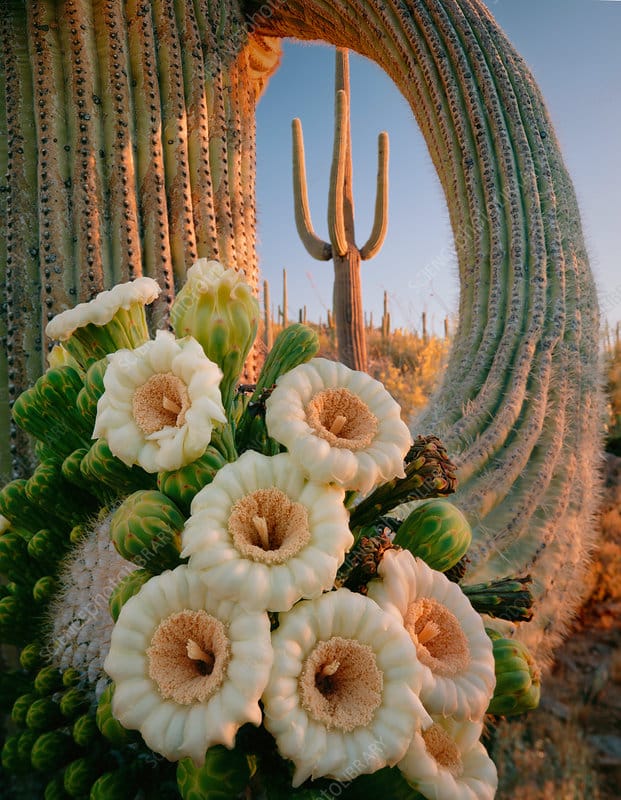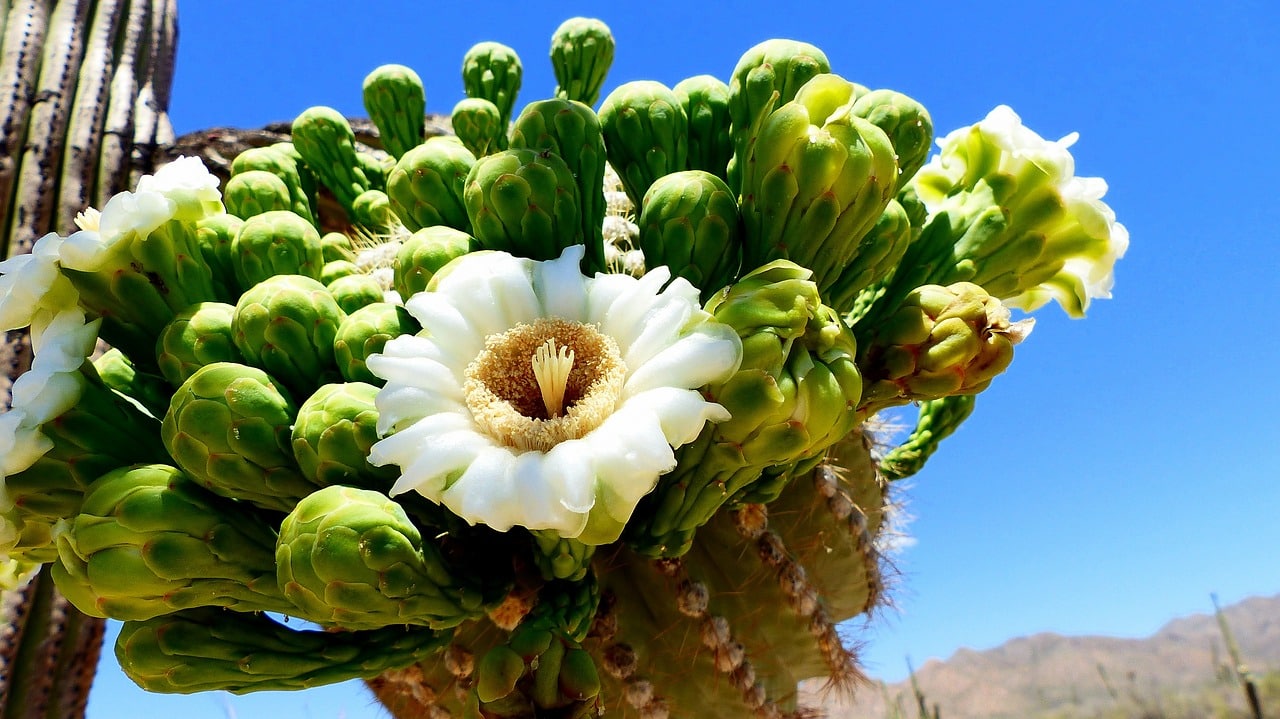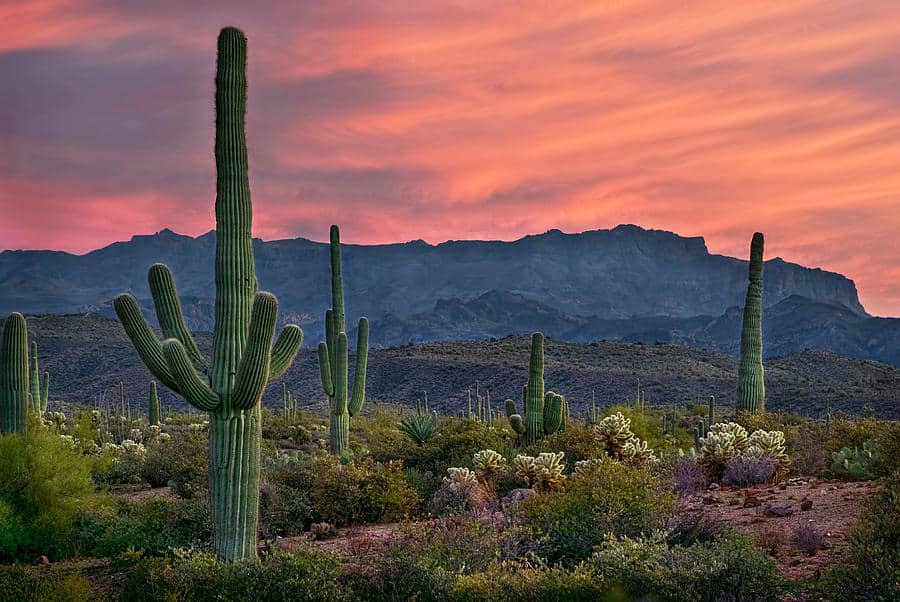The Saguaro Cactus, the largest cactus in the world


While the saguaro cactus has become synonymous with the American West, its natural habitat is limited to the Sonoran desert, primarily in southern Arizona. As a desert indicator species, its range is restricted to areas up to an elevation of 4,000 feet. As you move farther north and to higher elevations, the saguaro cactus thrives predominantly on warmer, south-facing slopes. One can find abundant saguaro cacti within the Organ Pipe Cactus National Monument, and impressive “saguaro forests” can be witnessed along the Ajo Mountain Drive.
Saguaro cacti bloom with flowers in late spring to early summer, typically between April and June. The flowers are milky white and emit a sweet nectar that attracts various species of bats. These bats feed on the nectar, inadvertently acting as pollinators for the saguaro cactus. As the cactus produces fruit, the bats consume them and aid in dispersing the saguaro seeds throughout the desert.

As the largest cactus species in the United States, the saguaro cactus typically reaches heights of 40 feet, although some exceptional individuals have been recorded towering over 78 feet. The saguaro cactus grows slowly, with all its growth occurring at the tip or top of the columnar structure. It takes approximately 10 years for a saguaro cactus to grow just one inch in height. By the age of 70, it can reach a height of 6.5 feet and start producing its first flowers. Around 95-100 years old, a saguaro cactus can reach a height of 15-16 feet and may begin developing its first arm. At the age of 200, the saguaro cactus reaches its full height, soaring up to 45 feet. Some saguaros exhibit numerous arms, while others remain armless, leaving the reason behind this phenomenon a mystery of the desert.

The saguaro cactus has evolved remarkable adaptations for survival in the harsh conditions of the Sonoran Desert. Every aspect of its structure is specifically designed to thrive in this environment. The cactus is covered with a thick waxy coating on its skin, providing waterproofing and reducing water loss through transpiration. Its skin is adorned with tough spines and flexible bristles, serving as a defense mechanism to protect the precious water stored inside.

Equally impressive is the root system of the saguaro cactus. It sends a large taproot deep into the soil, reaching approximately 5 feet down to access water stored underground. However, the main roots of the saguaro cactus spread out extensively near the surface, forming a maze-like network. These surface roots, lying within 3 inches of the ground, efficiently collect any rainfall that occurs.
Rather than utilizing water immediately, the saguaro cactus stores it for prolonged periods of drought. The cactus contains a sponge-like tissue inside, which acts as a reservoir for water storage. As more water is stored, the cactus expands, accommodating additional capacity. Consequently, the saguaro cactus can become quite heavy when fully hydrated, with a foot of cactus weighing up to 90 pounds, and a fully grown saguaro potentially weighing over a ton.



